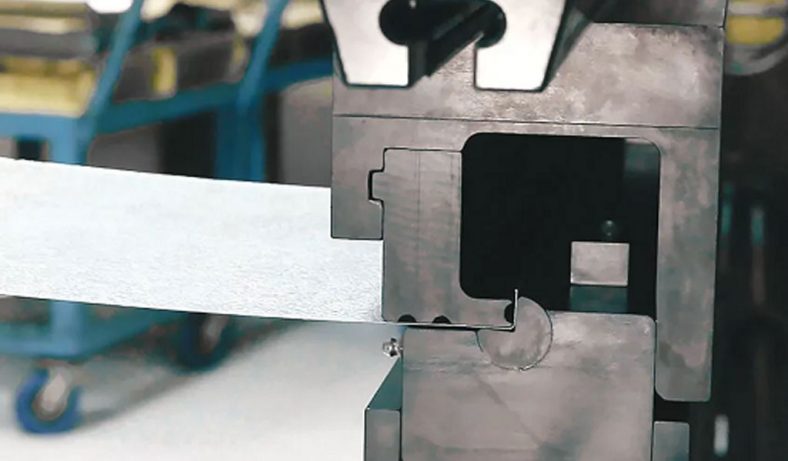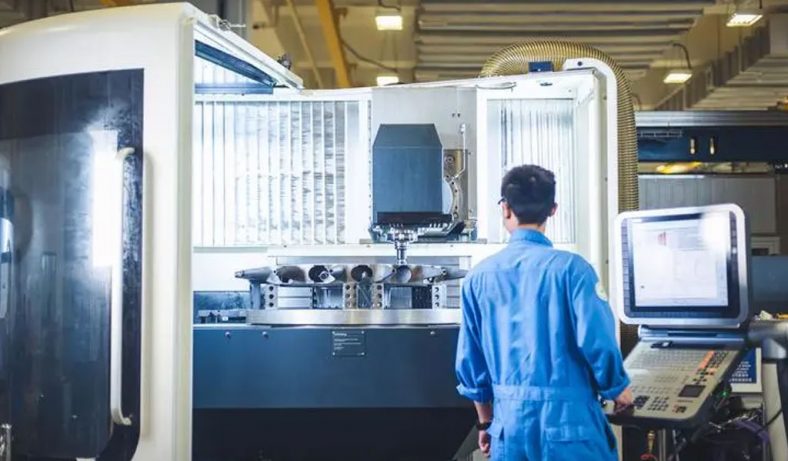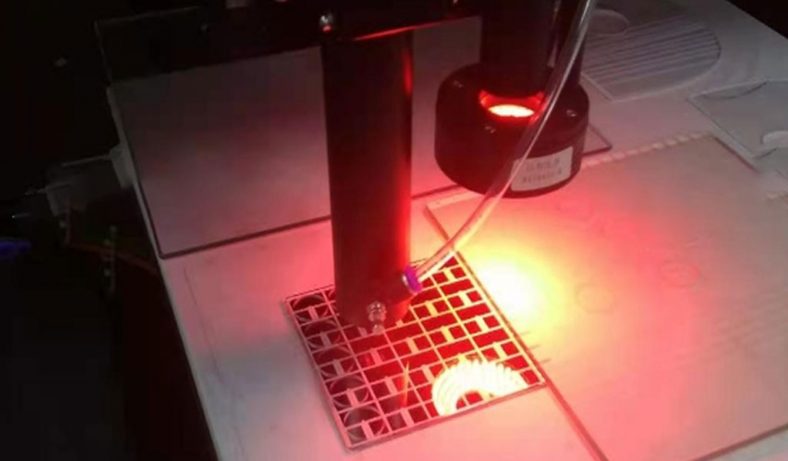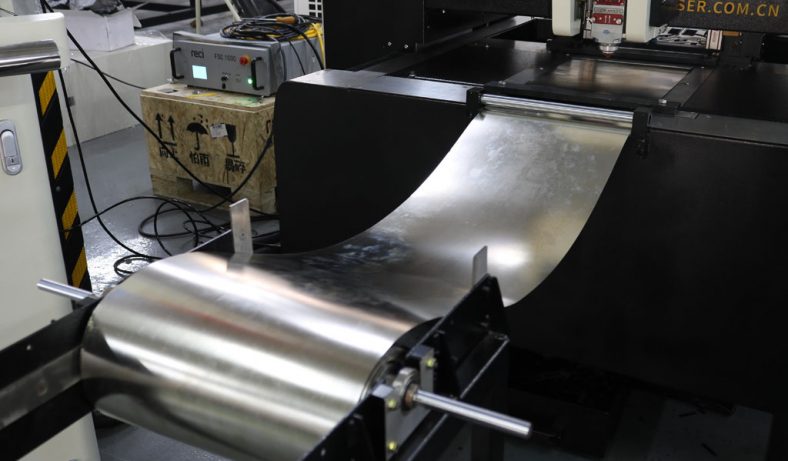
In the modern manufacturing landscape, automation technologies have revolutionized various industries, enhancing productivity, efficiency, and overall competitiveness. One such automation technology that has gained significant traction is the use of robotics for CNC (Computer Numerical Control) machine tending. CNC machines are widely employed in industries such as automotive, aerospace, electronics, and medical devices for precision machining tasks. Integrating robotics into CNC machine tending processes brings numerous advantages, including increased production throughput, reduced labor costs, improved safety, and 24/7 operation capability.This article delves into the concept of using robotics for CNC machine tending, its benefits, applications, challenges, and the future of this transformative technology.
What is CNC Machine Tending?
CNC machine tending is the process of loading and unloading workpieces into CNC machines for automated machining operations. CNC machines are versatile and capable of performing a wide range of machining tasks, including milling, turning, drilling, and grinding, with high accuracy and repeatability. Traditionally, machine tending has been a labor-intensive and time-consuming task, requiring skilled operators to handle workpieces and monitor machine operations. However, the integration of robotics into CNC machine tending has revolutionized this process, making it more efficient, cost-effective, and less reliant on human intervention.
The Role of Robotics in CNC Machine Tending
Robots, equipped with advanced end-of-arm tooling and sensors, have the capability to automate the entire CNC machine tending process. The key roles of robotics in CNC machine tending are as follows:
- Workpiece Handling: Robots can efficiently handle various workpieces, including raw materials and finished parts, and load them into the CNC machine for machining operations. They can also unload the completed workpieces from the machine and place them in designated locations.
- Tool Change and Maintenance: CNC machines require tool changes during machining operations. Robots can manage the tool change process by swapping out tools and ensuring that the correct tools are available for each machining task. Additionally, robots can perform tool maintenance tasks such as tool cleaning and inspection.
- 24/7 Operation: Robots can operate continuously without breaks, allowing CNC machines to run non-stop, thus maximizing production throughput and minimizing downtime.
- Quality Inspection: Robots equipped with sensors and vision systems can perform in-process quality inspection to ensure that machined parts meet specified tolerances and quality standards.
- Safety Enhancement: By automating the machine tending process, the need for human operators to be in close proximity to the CNC machine during machining operations is reduced, improving safety in the manufacturing environment.
Advantages of Using Robotics for CNC Machine Tending
The integration of robotics into CNC machine tending offers a wide range of advantages for manufacturers:
- Increased Productivity: Robots can work tirelessly and efficiently, enabling continuous operation and maximizing the productivity of CNC machines. With minimal downtime and increased throughput, overall production capacity is significantly enhanced.
- Improved Efficiency: Robotic machine tending is faster and more precise compared to manual handling, leading to reduced cycle times and increased machining accuracy.
- Cost Savings: By automating machine tending tasks, manufacturers can reduce labor costs and allocate human operators to higher-value tasks that require skilled expertise.
- Flexibility in Production: Robots are programmable and easily adaptable to different workpieces and machining tasks. This flexibility allows manufacturers to respond quickly to changing production demands and requirements.
- Enhanced Quality Control: With built-in sensors and vision systems, robots can perform real-time quality inspections, reducing the risk of defective parts and improving overall product quality.
- Consistency and Repeatability: Robots ensure consistent and repeatable handling of workpieces, eliminating human errors and variations in machine tending tasks.
- Safety and Risk Reduction: Automating the machine tending process reduces the risk of injuries and accidents associated with manual handling of heavy or sharp workpieces.
- Extended Operation Hours: Robots can operate 24/7, enabling manufacturers to utilize their CNC machines efficiently outside regular working hours, thus maximizing production capacity.
Disadvantages of CNC Robotics for Machine Tending
While CNC robotics for machine tending offer numerous advantages, there are also some disadvantages and challenges associated with their implementation. It is essential for manufacturers to be aware of these drawbacks to make informed decisions about adopting CNC robotics for machine tending in their operations. Here are some of the main disadvantages:
- High Initial Investment: The initial cost of implementing a CNC robotics system for machine tending can be significant. This includes the cost of the robotic arm, end-of-arm tooling, sensors, vision systems, safety features, and integration with existing CNC machines. Small and medium-sized enterprises (SMEs) may find the upfront investment prohibitive.
- Complex Programming and Integration: Programming a CNC robotic system for machine tending requires specialized expertise. Integrating the robotic system with existing CNC machines and manufacturing processes may involve complex configurations, especially when multiple machines or workpiece types are involved.
- Maintenance and Downtime: Like any sophisticated machinery, CNC robotics systems require regular maintenance to ensure optimal performance. Unplanned downtime due to robot malfunctions or breakdowns can disrupt production schedules and lead to additional maintenance costs.
- Limited Flexibility for Complex Setups: While robots excel at handling repetitive tasks, they may struggle with complex setups that involve varying workpiece geometries, sizes, and weights. Reconfiguring the robotic system for different workpieces can be time-consuming and may not be feasible for short production runs.
- Workpiece Handling Challenges: Delicate or irregularly shaped workpieces may present challenges for robots, particularly if they require precise positioning or intricate manipulation. Handling fragile or deformable materials may risk damage during the loading and unloading process.
- Lack of Human Dexterity: CNC robotic systems lack the human dexterity and adaptability to handle unpredictable situations or make on-the-spot adjustments. Human operators can often respond more intuitively to unexpected issues during machine tending.
- Highly Specialized Application: CNC robotics for machine tending are most effective for high-volume, repetitive tasks with standardized workpieces. In scenarios where production volumes are low or workpiece variability is high, the benefits of automation may not outweigh the complexities and costs of implementation.
- Occupational Displacement Concerns: The introduction of CNC robotics for machine tending may lead to concerns about job displacement for human operators. Although these systems can free up human workers to focus on more skilled tasks, some employees may worry about potential job losses.
- Complexity in Small Batch Production: In small batch machining scenarios, where frequent setup changes are required, the time and effort needed to reprogram the robotic system and adapt to different workpieces may negate the benefits of automation.
- Training and Skill Requirements: Implementing and maintaining CNC robotic systems require skilled technicians and engineers. Training existing staff or hiring specialized personnel may add to the overall cost and resource requirements.
While CNC robotics for machine tending bring significant advantages in terms of increased productivity, efficiency, and safety, they also come with some disadvantages and challenges. Manufacturers must carefully evaluate their specific production needs, volumes, and workpiece characteristics to determine if the benefits of automation outweigh the associated costs and complexities. In some cases, a hybrid approach, combining manual and automated machine tending, may be a more practical solution. As technology continues to advance and costs decrease, the disadvantages of CNC robotics for machine tending may be mitigated, making automation an increasingly viable option for a broader range of manufacturing scenarios.
Applications of Robotics in CNC Machine Tending
The integration of robotics in CNC machine tending has found applications in various industries:
- Automotive Industry: In the automotive sector, robots are utilized for loading and unloading components into CNC machines for precision machining of engine parts, transmission components, and chassis components.
- Aerospace and Defense: In the aerospace and defense industry, robotics assist in machining complex and intricate parts for aircraft and spacecraft components.
- Electronics Manufacturing: Robots are employed in electronics manufacturing for CNC machining of printed circuit boards (PCBs) and other electronic components.
- Medical Devices: In the medical device industry, robots handle delicate and intricate medical components during CNC machining medical parts processes.
- Industrial Machinery: Robots are used in manufacturing industrial machinery and equipment, where precision machining is required for various components.
- Consumer Goods: In the consumer goods industry, robots assist in CNC machining of components used in appliances, furniture, and other consumer products.
Challenges and Considerations in Implementing Robotics for CNC Machine Tending
While the benefits of using robotics for CNC machine tending are evident, there are challenges and considerations that manufacturers need to address:
- Initial Investment: Implementing robotics in CNC machine tending requires a significant initial investment in robotic equipment, end-of-arm tooling, and integration with existing CNC machines.
- Programming and Integration: Programming robots to handle various workpieces and interact with CNC machines requires skilled expertise. Integration of robots into existing manufacturing processes may also require adjustments and modifications.
- Workpiece Variation: Managing workpieces with varying shapes, sizes, and weights can be challenging, and robotic systems may need to be adaptable to handle a wide range of workpieces.
- Maintenance and Downtime: Robots require regular maintenance to ensure optimal performance. Unplanned downtime due to robot malfunctions or breakdowns may impact production schedules.
- Operator Training: Manufacturers need to provide proper training to operators and maintenance personnel to operate and maintain robotic systems safely and effectively.
- Safety Precautions: While robots can enhance safety in the manufacturing environment, manufacturers must implement safety protocols to prevent accidents, especially when robots work alongside human operators.
Parts of a Typical Machine Tending System
A typical machine tending system is a sophisticated automation solution designed to handle the loading, unloading, and management of workpieces in various manufacturing processes, such as CNC machining, metal stamping, injection molding, and more. The system comprises several essential components that work together to ensure seamless and efficient operations. Below are the key parts of a typical machine tending system:
Robotic Arm
The robotic arm is the central component of the machine tending system. It is responsible for picking up and placing workpieces into the CNC machine or other manufacturing equipment. The robotic arm is equipped with multiple axes of motion, allowing it to move with precision and flexibility to handle different workpiece geometries.
End-of-Arm Tooling (EOAT)
The end-of-arm tooling is the attachment at the end of the robotic arm that interacts directly with the workpiece. EOAT is designed specifically for the type of workpiece being handled, ensuring a secure grip and precise placement. Different types of EOATs are available, such as grippers, vacuum cups, magnetic clamps, and custom tooling for specialized applications.
Workpiece Storage and Feeding System
The machine tending system typically includes a workpiece storage and feeding system to hold and present the workpieces to the robotic arm. This can be a conveyor belt, pallet system, magazine, or other mechanisms designed to deliver workpieces in an organized and consistent manner.
Sensors and Vision Systems
Sensors and vision systems play a critical role in machine tending systems. They provide real-time feedback and data to the robotic controller, allowing the system to adjust its operations based on the workpiece position, orientation, and quality. Vision systems also facilitate accurate workpiece detection and identification.
Robotic Controller
The robotic controller is the brain of the machine tending system. It manages the movements and actions of the robotic arm and coordinates its interactions with the CNC machine or other manufacturing equipment. The controller interprets input from sensors and vision systems to make real-time decisions for optimal performance.
Safety Features
Safety is paramount in machine tending systems, particularly when robots work alongside human operators. Safety features such as safety scanners, area sensors, and emergency stop buttons are incorporated to ensure the safety of personnel and prevent accidents.
HMI and User Interface
The human-machine interface (HMI) provides a user-friendly interface for operators to interact with the machine tending system. Operators can monitor the system’s status, control operations, and make adjustments as needed through the HMI.
Communication and Connectivity
Machine tending systems often require communication and connectivity features to integrate with the CNC machine or other manufacturing equipment. Communication protocols such as Ethernet/IP, Modbus, and OPC-UA allow seamless data exchange and integration with the overall manufacturing process.
Programming and Software
Programming software is used to create and optimize the robot’s movements and actions in the machine tending process. The software also enables the robot to handle different workpiece types and adjust its actions based on specific parameters.
Machine Interface Adapter
In some cases, a machine interface adapter may be required to bridge the communication gap between the robot controller and the CNC machine or manufacturing equipment. This adapter ensures compatibility and smooth data exchange between the two systems.
Part Verification and Quality Inspection
Depending on the application, machine tending systems may include part verification and quality inspection features to ensure that the finished parts meet specific quality standards. Vision systems or other inspection methods can be incorporated into the system for this purpose.
Remote Monitoring and Maintenance
Some machine tending systems offer remote monitoring and maintenance capabilities, allowing operators or technicians to monitor the system’s performance and address issues from a remote location.
A typical machine tending system is a complex and integrated automation solution that combines robotics, sensors, vision systems, controllers, and safety features to efficiently handle the loading, unloading, and management of workpieces in manufacturing processes. By automating these tasks, machine tending systems bring increased productivity, improved efficiency, and enhanced safety to manufacturing operations, contributing to the overall competitiveness and success of a manufacturing facility.
The Future of Robotics in CNC Machine Tending
The integration of robotics in CNC machine tending is poised to play an increasingly significant role in the manufacturing industry. As technology advances and costs decrease, robotics will become more accessible to small and medium-sized enterprises (SMEs). The future of robotics in CNC machine tending includes:
- Collaborative Robotics (Cobots): Collaborative robots, or cobots, are designed to work safely alongside human operators. In CNC machine tending, cobots can assist in tasks that require human intervention, such as part inspection and tool change.
- AI and Machine Learning: Integrating artificial intelligence (AI) and machine learning algorithms can enhance robot capabilities, enabling them to adapt and optimize CNC machine tending processes based on real-time data and performance feedback.
- Internet of Things (IoT) Integration: IoT integration can provide real-time data monitoring and remote control of robotic systems, allowing manufacturers to manage production processes efficiently.
- Adaptive Grippers and Sensing Technologies: Advanced grippers and sensors can enable robots to handle a wider range of workpiece geometries and materials, increasing their versatility in CNC machine tending.
- Multi-Robot Collaboration: Implementing multiple robots to work collaboratively can further improve production throughput and flexibility, allowing for more efficient CNC machine tending in complex manufacturing environments.
The integration of robotics in CNC machine tending is a transformative development in the manufacturing industry. By automating the loading, unloading, and tool change processes, robots bring increased productivity, cost savings, improved quality control, and enhanced safety to CNC machining operations. As technology continues to evolve, robots will become more intelligent, versatile, and cost-effective, making them an indispensable tool for manufacturers aiming to stay competitive in a fast-paced and demanding market. Embracing the potential of robotics in CNC machine tending will undoubtedly lead to greater efficiency, higher production capacities, and a sustainable future for the manufacturing industry.
Leverage Be-Cu’s Automated Partners
Implementing robotic automation systems into existing manufacturing plants is an excellent way to boost productivity and increase profits. However, these systems can be costly and are not the best solutions for everyone. Alternatively, you can make use of Be-Cu’s large in-housing network of world-class manufacturers who already have implemented these systems; you gain the benefits without the capital investment.
To learn more, View Following articles:
-

How to Calculate Sheet Metal Fabrication Cost and Time in 2024?
-

Lathe Spinning Equipment and China Spin Forming Technology
-

Exploring Ultra-Fine Nitinol Material: Define,History,Type And Applications
-

Top 30 CNC Machining Companies and Manufacturers in USA
-

Micro Laser Cutting For Optics
-

Micro Laser Cutting For Electronic
-

The Pivotal Role of Agriculture Equipment Manufacturers in the Global Food Supply Chain
-

How to Calculate Laser Cutting Cost And Time
